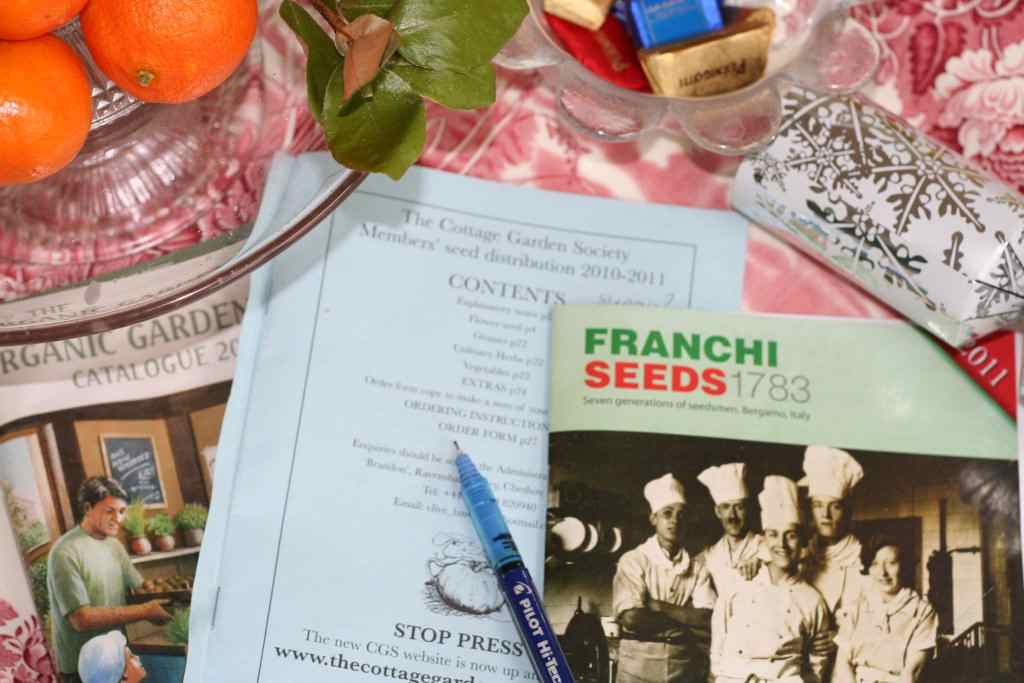Since history began, farmers and gardeners have saved seed from their harvest to sow the following year. Nowadays, seeds are on sale and gardeners accept the practice (or temptation?) of buying seed every year rather than saving their own. Yet seed saving is free. And seed swapping, once you’ve saved your seed, is cheap and fun!
There are some other reasons why seed saving and swapping is a good idea. EU legislation since the 1970s bans the sale of seeds not on a registered list, with the intention of protecting growers from buying unsound seeds. There is a fee to go onto the list, and varieties that do not sell in large quantities may not make it on. Commercial growers’ priorities may favour varieties suiting their mass production requirements, for example beans ripen all once so that they can easily be harvested by machine. These do not necessarily include traits valued by gardeners, such as varied ripening times to avoid gluts. And as seeds are produced to sell nationwide, seed varieties are not matched to local growing conditions. Seed swaps help widen the range of what is available and to preserve unlisted ‘heritage’ varieties.
By helping preserve our old seed varieties, we are maintaining the ‘reservoir of genetic material’ as Lindy Sharpe of community seed swap ‘Seedy Sunday’ explains.
“Seeds are one of the fundamentals of life, and lie at the base of the human food chain. By pollinating freely and making seed, plants … adapt opportunistically to new conditions. As the reservoir of genetic material shrinks – because fewer varieties are grown – the potential for plants (and the growers who use them) to make successful new adaptations in the future is jeopardised. Globally, the United Nations estimates that 75% of plant diversity has been lost in the past 100 years.’
What seed savers do every year is renew the stock of plant material, and preserve a bit of the gene pool for the future.
As well as postal seed swaps like for example those run by the Cottage Garden Society and the Hardy Plant Society, there are an increasing number of events where people can turn up with their seeds and exchange them, as well as take part in other gardening-related activities. ‘Seedy Sunday’ in Brighton & Hove has a good website (on which I have leant heavily to write this – thank you!) which as well as giving the background to seed swapping, has a list of similar events all over the UK .
The reason I’m writing this, I guess, is that I’m organising one too – in the little Northants. village of Wappenham. Last year I held it in my house and it was a fun thing to do at what can be a gloomy time of year. I managed to get ‘Cherokee Trail of Tears’ and ‘Daniel’s Defiance’ beans, which went very well. In fact I have never seen a bean germinate and grow as enthusiastically as DD – it seems well suited to conditions round here. If you happen to be local, the event’s happening on Feb 25th, 2-4pm in our village hall. With home-made teas, and chickens to buy as well!
Another UK seed saving source for gardeners is the Heritage Seed Library. Its purpose is to conserve vegetable varieties that don’t feature in modern catalogues, to safeguard our seed heritage. ‘Seed Guardians’ grow seed for the library, and ordinary Seed Library members can choose seeds from a catalogue of 200 varieties (the total heritage library covers many more seeds which are not at present in large enough amounts to be distributed). If you are outside the UK see this link to seed savers in your country.
So by saving seed you are helping to save the gene pool – not bad for something you can do in your own back garden!
Jane Harries
*For more information about seed-swapping and its benefits see www.seedysunday.org.
